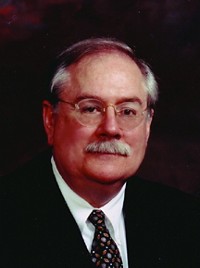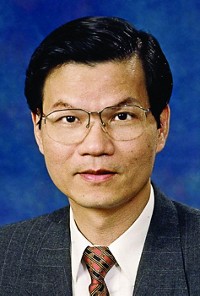Advertisement
Grab your lab coat. Let's get started
Welcome!
Welcome!
Create an account below to get 6 C&EN articles per month, receive newsletters and more - all free.
It seems this is your first time logging in online. Please enter the following information to continue.
As an ACS member you automatically get access to this site. All we need is few more details to create your reading experience.
Not you? Sign in with a different account.
Not you? Sign in with a different account.
ERROR 1
ERROR 1
ERROR 2
ERROR 2
ERROR 2
ERROR 2
ERROR 2
Password and Confirm password must match.
If you have an ACS member number, please enter it here so we can link this account to your membership. (optional)
ERROR 2
ACS values your privacy. By submitting your information, you are gaining access to C&EN and subscribing to our weekly newsletter. We use the information you provide to make your reading experience better, and we will never sell your data to third party members.
Synthesis
Arthur C. Cope Scholar Awards: Keiji Maruoka
Recipients are honored for contributions of major significance to chemistry
by Ann M. Thayer
February 28, 2011
| A version of this story appeared in
Volume 89, Issue 9
Contributions made during a 30-year-long academic career by Keiji Maruoka, a professor of chemistry at Japan’s Kyoto University, rank him among the most creative and productive synthetic chemists in the world, according to his colleagues.
His major achievements encompass a wide variety of new synthetic methodologies, including the creation of new reagents and catalysts. These contributions have been chronicled in more than 300 scientific publications and three dozen patents.
In particular, his work in asymmetric organocatalysis has advanced the field into new areas. His novel approaches have led to the design of chiral phase-transfer catalysts for artificial amino acid synthesis, chiral bifunctional organocatalysts, and chiral organodiacid catalysts for asymmetric transformations.
In 1999, for example, Maruoka designed and synthesized nonnatural, C2 symmetric, chiral phase-transfer catalysts, now known collectively as the Maruoka Catalyst, derived from optically pure binaphthol. Using these catalysts, he developed a practical approach for the asymmetric synthesis of natural and nonnatural amino acid derivatives.
Refining his results, Maruoka took the important step of rationally redesigning these catalysts. The resulting structurally simplified version, known as the Simplified Maruoka Catalyst, still possesses extremely high catalytic performance and virtually complete enantioselectivity. Available from chemical suppliers and made on the kilogram scale, these catalysts are used in the large-scale production of nonnatural α-alkyl and α,α-dialkyl-α-amino acids from glycine derivatives.
“In an age when chiral phase-transfer catalysts were all derived from Cinchona alkaloids, he introduced a design not reliant on [a chiral starting material], which has proven to be more malleable and, more importantly, far more effective,” Colorado State University chemistry professor Tomislav Rovis says.
“Given that about 20% of the top 500, best-selling medicines utilize α-amino acids as starting materials and pharmaceutical intermediates, his technology is of great significance and will likely prove to be more and more important in pharmaceutical areas in the near future,” Rovis adds.
Maruoka’s ongoing research interests are in the areas of bidentate Lewis acids in organic synthesis, molecular recognition with bowl-shaped molecules, and practical asymmetric synthesis with chiral organocatalysts. Recently, he received a five-year, $5 million Japan Society for the Promotion of Science grant. He used the funding to establish the Organocatalytic Chemistry Special Laboratory, which is devoted to designing high-performance organocatalysts for application in fine chemicals synthesis.
Maruoka, 57, received a B.S. in chemistry from Kyoto University and then completed his graduate work at the University of Hawaii. He began his academic career at Nagoya University in 1980, then moved to Hokkaido University in 1995, and returned to Kyoto as a professor of chemistry in 2000. There, he served as department chair in 2004.
In addition to an extensive number of published scientific papers and patents, he has presented more than 160 lectures about organocatalysis since 2000. His work has been recognized with several honors, including the Inoue and Ichimura Prizes, the Nagoya Silver Medal, the Synthetic Organic Chemistry Award of Japan, the Green & Sustainable Chemistry Award, and the Chemical Society of Japan Award.






Join the conversation
Contact the reporter
Submit a Letter to the Editor for publication
Engage with us on Twitter